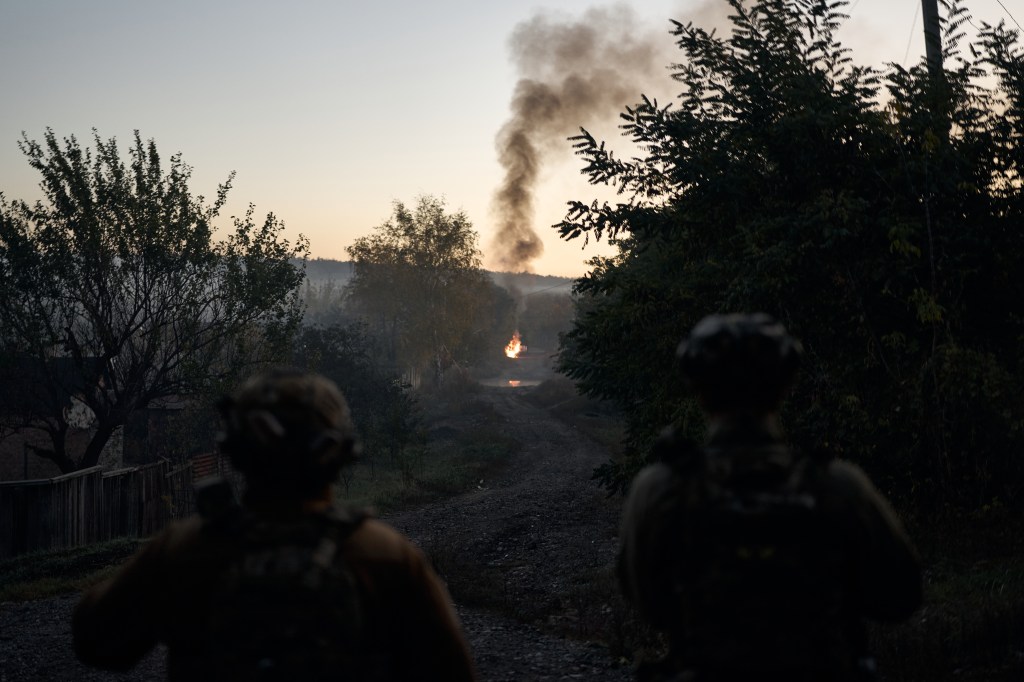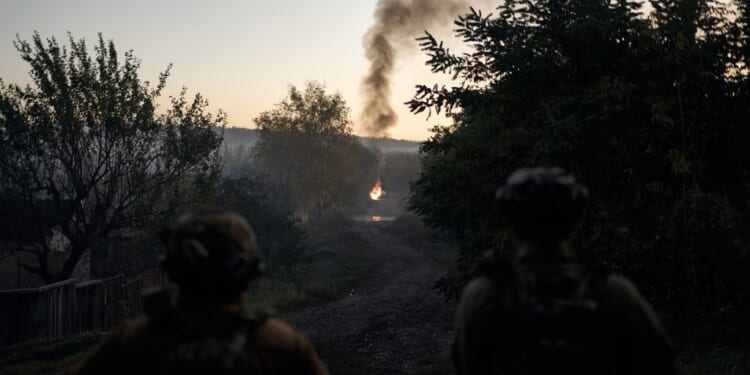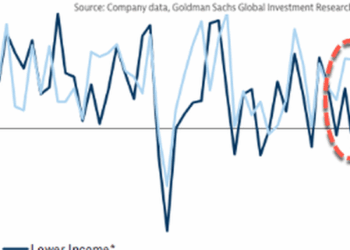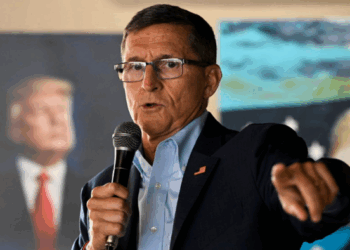
After news broke on October 13 that Ukrainian President Volodymyr Zelensky would visit the White House later that week, Putin quickly set up a call with Trump for the day before the visit. In a subsequent Truth Social post, Trump described the conversation as “very productive” and announced he would meet the Russian dictator in Budapest in the coming weeks. Trump’s colloquy with Zelensky the next day was less pleasant. According to the Financial Times, the meeting became a shouting match at multiple points, and Trump “repeatedly echoed talking points the Russian leader had made in their call.” He reportedly pressured Zelensky to surrender the entire Donbas region to Putin—even parts Russia does not control—in exchange for an end to the war. Publicly, Trump’s ceasefire proposal is to pause fighting on the current lines—which Zelensky says he would support.
But then, following a phone call between Secretary of State Marco Rubio and Russian Foreign Minister Sergey Lavrov this week, the White House announced the Budapest meeting with Putin was off. Trump said yesterday that he “didn’t feel like we were going to get to the place we have to get.” And shortly after, he announced sanctions on Russia’s two largest oil companies.
More than three years after Russia invaded Ukraine, hoping for a swift conquest, Zelensky faces an enemy that deliberately attacks civilian infrastructure, and an inconsistent American president who is pulled in various directions by different voices in his inner circle. Strikes from both sides are constant—a rescue worker died Wednesday after the second straight night of drone attacks on Ukrainian civilian areas, and a large Russian oil refinery was on fire this morning after a Ukrainian drone attack. But for all intents and purposes, the war is deadlocked, with the frontlines remaining relatively static since Trump and Putin’s Alaska summit in August.
“There has been very little change on the military side,” Mark Cancian, a fellow at the Center for Strategic and International Studies, told TMD. “For the last year and a half, the military side has been essentially the same.”
With minimal advances on the front, both sides have tried to wear down the other’s war machines, using military drones to attack inside their opponent’s territory. The two nations are hitting each other’s energy infrastructure, while the Russians are also trying to damage Ukrainian railroads and other transportation mechanisms, Jacquelyn Schneider, director of the Hoover Institution’s Wargaming and Crisis Simulation Initiative, told TMD.
“It signals that both sides think that the way to make headway on the battlefield is degrading each state’s ability to sustain conflict—both civilian willingness to sustain conflict and then the actual kind of energy and logistics behind that sustainment,” she said. “And I think that signals what we’ve been seeing, which is that both states don’t believe that they can easily achieve a major breakthrough on the battlefield and are hoping that some degradation of political or logistical support will lead to a battlefield success.”
That’s where the Tomahawk missiles could help Ukraine. In a war of attrition, where the path to victory appears to be breaking down the other side’s resources and mettle, long-range strikes would give Zelensky’s team a strategic advantage. The United States has provided ATACMS, which have a range of just under 200 miles, but Tomahawks can strike targets from 1,000 to 1,600 miles away.
“It’s not that it’s going to do anything on the front lines, but it might be able to strike these targets—energy, particularly—that really might put enough pressure on Russia that it would decide that negotiations were better than taking the risk of declining revenues and not being able to equip the troops and, perhaps, domestic unrest,” Cancian told TMD.
On Wednesday, the Wall Street Journal reported that the White House approved Ukraine’s use of European long-range missiles to strike deep into Russia, which Trump denied shortly after.
Another way to attack Russia’s economic vulnerabilities is through sanctions to keep it from profiting from oil sales to other countries. The U.S. Senate may consider a bill with that goal from Republican Sen. Lindsey Graham of South Carolina and Democratic Sen. Richard Blumenthal of Connecticut, which goes even further than what Trump announced Wednesday. Under the legislation, if the president determines that Russia is taking actions such as refusing to negotiate a peace agreement with Ukraine or violating a negotiated agreement, he must impose a bevy of penalties on Russian products. Those punitive measures include not only sanctions but also a 500 percent tariff on both Russian goods and imports from countries that knowingly buy uranium or petroleum products from Russia.
Whether that will work is questionable, however. “As we’ve seen, Russian society is willing to tolerate quite a lot of discomfort,” Hudson Institute Senior Fellow Luke Coffey told TMD. “And Putin continues to have a lock or complete control over the messaging and the narratives inside Russia, as you would expect from an authoritarian leader, and any economic impact will take time to work its way through the system and to be felt.”
Still, the sanctions bill, which has overwhelming support in the Senate with 84 co-sponsors, could be a barometer of how much Republicans in Congress, many of whom are in favor of taking a much stronger posture against Russia than Trump is taking now, can pull the president to their side.
“There is a big appetite among Republicans, House and Senate, I can tell you, for tough sanctions on Russia,” Speaker of the House Mike Johnson said at a Tuesday press conference in response to a question from TMD. “The president, as you know—you can take him at his own word—he’s lost his patience with Putin. He’s not a good-faith operator. Obviously, he’s the aggressor in an unjust war.”
But the bill has been in limbo ever since Graham and Blumenthal introduced it in April. For most of the spring and summer, Senate Majority Leader John Thune had been waiting for a cue from the White House on whether to put the legislation on the floor. But last week, Thune said the time was approaching to consider the bill, setting a timeline of roughly 30 days for starting that process.
This, however, came before the Trump-Putin phone call and Zelensky’s visit to the White House. When lawmakers came back to Washington after the weekend, Thune indicated the bill was on hold until after Trump and Putin’s expected Budapest meeting. With that meeting now on hold, the bill’s fate remains unclear—though the legislation’s GOP supporters will try to convince Trump that the time is right to move on it.
“We’re trying to empower the president to end the war,” Graham told TMD. “If he can end the war without the bill, great. It seems to me that Putin is not interested in ending the war, that Ukraine agreed to the Trump ceasefire proposal, but Putin clearly has not, so I think now would be a good time to give President Trump those tools.”

















